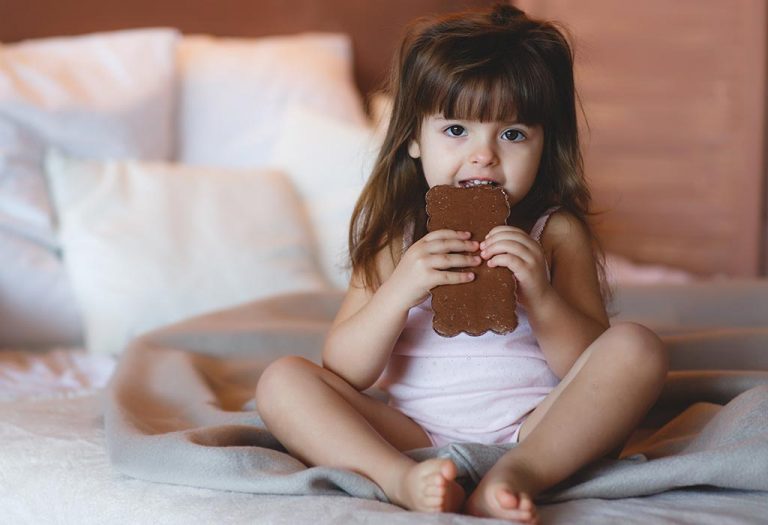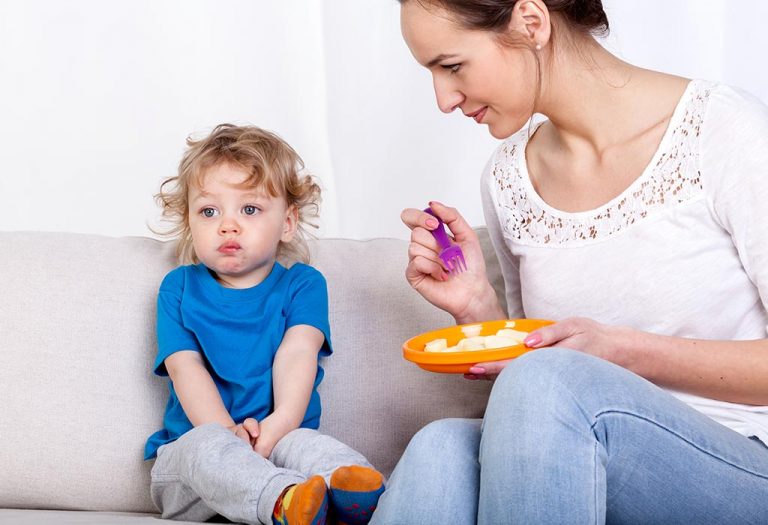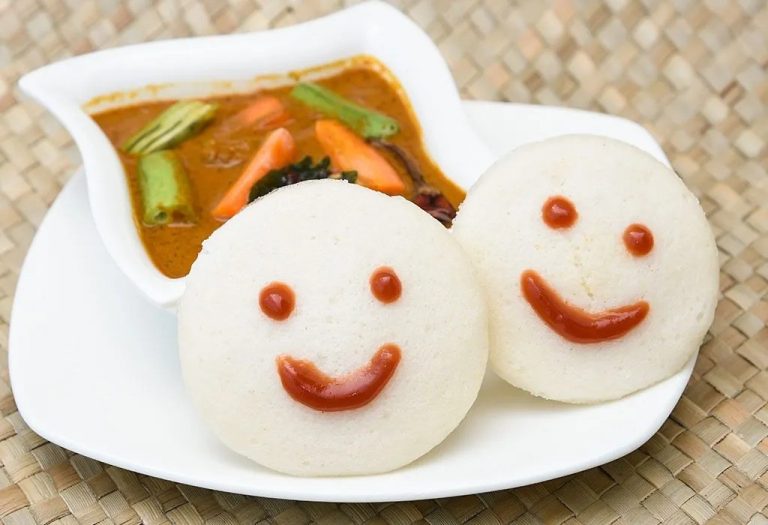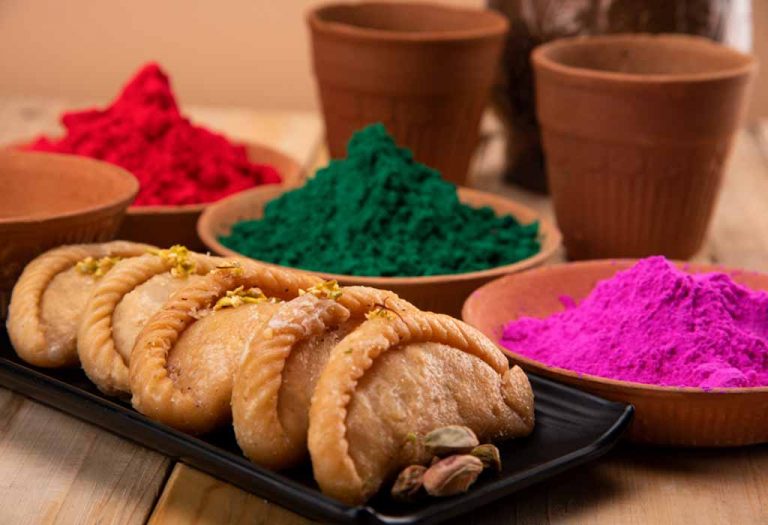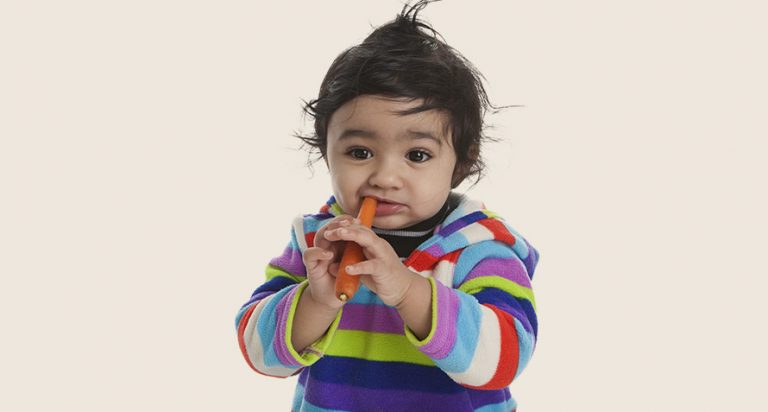Chocolates for Kids – Benefits, Side Effects and Fun Facts

For many kids, the first chocolate bar they received on their birthday might have been the very incentive they needed to socialise with new people. Chocolate has also been the favourite comfort food for many. But, parents often wonder whether it is good for kids. This is because it is often linked to poor dental health. Well, the answer is rather straightforward – treating chocolate like a treat and not a mandatory food item is how you can begin to keep those chocolate-eating habits in check. Pairing that with a healthy choice of chocolate for kids would be the right way ahead, too. In this article, you will find some useful information about chocolate that can help choose the right kind to ensure your child’s health isn’t affected. But, before we get on to it, let’s explore some interesting facts about this sweet treat.
What Is the Origin of Chocolate?
Here’s a brief history of chocolate for kids. Cacao beans, the fundamental ingredient from which chocolate is derived, held significant cultural and economic importance in the ancient Mayan civilization, where they were utilized as a form of currency. Revered as the food of the deities, chocolate held sacred status in various Mesoamerican cultures. The transformation of chocolate into solid form occurred in 1847 with the manufacturing of the first chocolate bar, prior to which it was primarily consumed as a beverage. The introduction of cocoa beans to Spain is credited to Christopher Columbus, who presented them to the Spanish monarchs. In the Aztec civilization, chocolate-based drinks were particularly esteemed, with kings reportedly consuming up to ten cups in a single day, underscoring its esteemed status in their society.
From cacao beans, chocolate milk to the bars that are available in every corner of the world, chocolates have made quite a journey in various forms. Below, we shall discuss some more of these forms available at present.
Is Chocolate Good for Kids?
Chocolate can be enjoyed by kids in moderation, but it’s important to be mindful of the type and quantity consumed. Dark chocolate, in particular, contains antioxidants and may offer some health benefits when consumed in moderation. However, many chocolate products contain added sugars and fats, which can contribute to excessive calorie intake and potential health issues such as obesity and tooth decay if consumed in large amounts. Additionally, chocolate may contain caffeine, which can affect children differently than adults and may lead to issues with sleep or hyperactivity in some cases. Therefore, while it’s okay for kids to enjoy chocolate as an occasional treat, it’s essential for parents to monitor their intake and encourage a balanced diet overall.
Different Types of Chocolates
Though most kids are introduced to chocolates in its popular form as a chocolate bar, there are numerous forms of chocolate that can be used. These vary across flavour and composition, making them the preferred choices to be used in a variety of recipes.
1. Ground Chocolate
What do you get if you were to keep smashing a chocolate bar until it reduced down to a powder-like state? That is precisely what ground chocolate is, and it is commercially available, too. Ground chocolate is used in various preparation as garnishing or even as an important constituent. Do not confuse it with cocoa powder that is easily available in the supermarkets.
2. Unsweetened Chocolate
The inclusion of sugar and other sweetening agents in the chocolate bar is what brings out its flavour and makes it deliciously edible. Pure chocolate, which is extracted from the liqueur of the same substance after hardening it, is not sweet at all. It is also termed as bitter chocolate or even baking chocolate since pure chocolate forms quite an integral component of various baked dishes and even cakes.
3. Chocolate Liqueur
The precursor to unsweetened chocolate, chocolate liqueur can be termed as the initial stage that leads to the formation of other chocolate types. It resembles a smooth liquid with a chocolate flavour, although the word “liqueur” is not to be connected with alcohol. When cocoa beans are procured, they are ground together until they form a paste that has a smooth texture. This paste generally contains a substantial proportion of cocoa butter, which is extracted after the paste is melted to separate the liqueur.
4. Cocoa Powder
Another popular ingredient used by many people in a variety of preparations, cocoa powder, is interpreted by many to be similar to ground chocolate. However, that isn’t the case. Cocoa powder is exactly what it states, a powdered form of cocoa beans. The shells of the beans are removed, and the beans are then ground together. The powder also ends up containing a small amount of cocoa butter in them. This powder is the first step in making some delicious chocolate-flavoured beverages.
5. White Chocolate
If compared on technical terms, white chocolate would not be considered in the category of chocolates, since the essential ingredient of chocolate liqueur, is missing from its constitution. However, the reason why it is popular and included in the list of chocolates is due to the presence of around 25% chocolate in its form, which is paired with sugar and milk-based products to give it its unique taste.
6. Bittersweet Chocolate
Bittersweet chocolate is one of those types a lot of health fanatics swear by and indulge in regularly to satisfy their cravings. It is not the same as dark chocolate, which is actually a variant of it with a little more sweetness. Bittersweet chocolate primarily contains a specific proportion of sugar, cocoa butter and raw chocolate. These proportions have to be precise in order to deliver a combined flavour that’s bitter and sweet at the same time.
The information on the forms of chocolates provided above should help you make a healthy choice for your little one. Some more tips for choosing the right chocolate are also given later in the article. For now, let’s find out how the right chocolate in the right proportion benefits the child.
Health Benefits of Chocolates for Children
Is chocolate good for toddlers? For children, chocolate is usually considered to be a treat or an occasional luxury to indulge in. And, as proper as it might be, it is not just the taste, chocolate has vitamins for kids that provide numerous health benefits as well. Here are some benefits of chocolate for kids.
- The constitution of chocolate is known to contain certain elements and substances that affect various mood-regulation hormones within our body, such as serotonin and help in getting them back to a good level. Dark chocolates, especially, are extremely beneficial to elevate your mood.
- When lacking in energy or tiredness starts dawning upon you, taking a bite of chocolate can make you feel rejuvenated and give you a quick boost of energy to get back to your tasks.
- Dark chocolate is recommended by many people since it plays a vital role in stimulating the brain’s hippocampus by the presence of flavonoids. These elements, when stimulated, result in your children developing good concentration and effective memory.
- Certain flavonoids are present within the cocoa powder used for chocolate production itself. Apart from improving the properties of preventing inflammation, increasing antioxidants and improving the clotting properties in the blood, insulin sensitivity gets a boost as well, reducing the chances of being diabetic in the future.
- Milk chocolates and dark chocolates, when combined effectively, provide the appropriate balance of flavonoids from the latter and reduced caffeine consumption from the former.
- The flavonoids present in the cocoa powder used in chocolates are similar to those found in red wines and certain fruits. As doctors suggest that a glass of red wine is good for your heart, a similar proposition can be presented for your kids in regard to chocolate.
- If your child suffers from skin-related issues or does not have healthy skin, eating chocolate could help restore the healthy skin back, without inducing any acne.
- The antioxidants present in the chocolate play a key role in taking care of any free radicals within the child’s body and preventing them from damaging the body internally.
- Dark chocolate is considered a healthy choice by many, simply because of the presence of various minerals such as selenium, zinc, potassium, magnesium, iron and many others, making a part of its constitution.
- Most parents avoid giving their children chocolate due to the belief that eating chocolate causes teeth to decay. The truth is actually the opposite since chocolate actually works towards reducing the presence of plaque. Cleaning teeth properly, twice a day at least, will reduce the chances of decay and help maintain dental health.
- One of the key effects of eating chocolate is the immediate boost to blood circulation within the body. This helps support the developing brain function in children as well.
- Most dark chocolates contain tryptophan. This is essential in revitalising your mood and reducing the stress in your body.
Every food has pros and cons. We have already listed some health benefits of eating chocolate above. But, did you know there are side effects also? Read on to keep them at bay.
Side Effects of Chocolate When Taken in Excessive Quantities
Even though chocolates might provide a lot of happiness and some health benefits, the effects of chocolates on toddlers and kids, when consumed in improper circumstances or quantities, can be harmful temporarily or even in the long term.
1. Insomnia
Yes, this isn’t just an issue plaguing the adults of today. Though this might not be due to stress in children, the presence of caffeine in most chocolates today can be a stimulant for kids, keeping them awake at night, and robbing them of the necessary amount of sleep.
2. Avoiding Healthy Food
What starts as an occasional tantrum, could very well manifest into a habit. The affinity that children develop towards the sweetness and taste of chocolate could cause them to push away any other healthy foods, resulting in their development taking a hit.
3. Increased Risk of Allergies
Various chocolates contain a lot of other constituents such as milk, nuts, or added flavours. If your child has an allergy for either of these, choosing chocolate blindly and eating it could trigger them right away and cause a medical emergency.
4. Peeing a Lot
The bladder capacity in children develops over time, which is why they need to go to the toilet more often. The presence of caffeine in chocolate aggravates it further since it is a diuretic. This could cause your little one to visit the loo numerous time or even end up wetting his pants.
5. A Propensity for Addiction
Chocolate addiction is real. Very real. Be toddlers or young kids, the taste of chocolate can get too hard to resist at times, leading children to start crying when they are refused chocolate, or resorting to eating chocolates by hiding it from the parents.
6. Increased Hyperactivity
Children are already bundles of pulsating energy, staying engaged in one thing or the other. The presence of sugar in chocolates gives that yet another boost, by increasing the levels of sugar and adrenaline in the blood. This could make it difficult for your kid to stay in one place and concentrate.
7. Risk of Diabetes
It is not chocolate that causes diabetes, but its effect on insulin sensitivity that is the culprit. Even in children, consuming chocolates in exorbitant quantities could cause a huge load on the body’s insulin production, and could create the foundations to trigger type 2 diabetes quite early in life.
8. Risk of Obesity
Not just sugar and caffeine, but chocolates have a lot of fat in them as well, thanks to the presence of cocoa butter and other ingredients. By exposing the body to large quantities of chocolate, and leading a lifestyle void of exercise, your child is pretty much opening the door to obesity by himself.
Tips to Choose the Right Chocolates for Kids
There’s nothing wrong with giving chocolates to your kids. However, choosing healthy chocolate for kids and giving them at the right time is just as important.
- Do use chocolates as a way to encourage good behaviour in your child but don’t use them to get them to behave properly or as a bribe to get a task done.
- Instead of opting for large bars of chocolate, go for smaller ones and in limited quantities.
- Opt for chocolates that have low-fat, sugar and milk content in them.
- Alternate usual chocolates with chocolate-flavoured biscuits or ice cream, once in a while.
- There are caffeine-free chocolate bars available as well. Choose those over the usual ones.
- Consider choosing chocolates with higher cocoa content, as they tend to have less sugar and more antioxidants.
- Look for chocolates that are labeled as organic or free from artificial additives and preservatives to ensure a healthier option for your child.
Interesting and Fun Facts About Chocolates for Kids
Introducing children to fun and interesting facts about chocolates can spark their curiosity and deepen their appreciation for this beloved treat. Here are some fascinating chocolate facts for kids:
- Chocolate comes from the cacao bean, which grows on the cacao tree.
- The Aztecs and Mayans were among the first civilizations to cultivate cacao trees and consume chocolate.
- Chocolate was once used as a form of currency by the Aztecs.
- White chocolate isn’t technically chocolate because it doesn’t contain cocoa solids.
- The world’s largest chocolate bar weighed over 12,000 pounds!
- Chocolate melts at around 93°F (34°C), which is just below the average human body temperature.
- The smell of chocolate increases theta brain waves, which can induce relaxation.
- Chocolate contains a small amount of caffeine, which can provide a slight energy boost.
- The first chocolate chip cookie was invented by Ruth Wakefield in the 1930s.
- Switzerland consumes the most chocolate per capita in the world.
- The first chocolate Easter eggs were made in Europe in the 19th century.
- Chocolate can be toxic to pets, especially dogs and cats, so it’s important to keep it out of their reach.
- Chocolate has been used in savory dishes, such as mole sauce in Mexican cuisine.
- The word “chocolate” comes from the Aztec word “xocolatl,” which means “bitter water.”
- Chocolate has been enjoyed for thousands of years and continues to be a beloved treat worldwide.
FAQs
1. How much chocolate should my child eat?
Children can enjoy chocolate as an occasional treat, but it’s important to limit consumption to moderate amounts. One or two small servings per week is generally considered reasonable.
2. Can consuming chocolate affect my child’s behaviour?
Chocolate contains small amounts of caffeine and sugar, which can have a temporary impact on some children’s behavior. However, in moderation, chocolate is unlikely to cause significant behavior changes in most children.
3. What are Some creative recipes that parents can try with chocolate to make it healthier for kids?
Parents can try making homemade chocolate treats using healthier ingredients such as dark chocolate with higher cocoa content, natural sweeteners like honey or maple syrup, and nuts or dried fruits for extra nutrition. Examples include chocolate-covered strawberries, homemade granola bars with chocolate chips, or chocolate avocado pudding.
4. Is chocolate milk good for kids?
Chocolate milk can be a part of a balanced diet for kids when consumed in moderation. It provides essential nutrients like calcium and vitamin D, but it’s important to choose options with lower sugar content or consider making homemade chocolate milk using unsweetened cocoa powder and a natural sweetener like honey.
Falling in love with chocolate doesn’t take a long time, and neither does the addiction. By keeping a grip on the consumption of chocolate right from the start, you can make sure your child benefits from it and stays away from any potential side effects, keeping himself healthy throughout. If you’re looking for ways on how to make chocolate at home for kids, there are numerous chocolate recipes for kids available online!
References/Resources:
1. Chocolate: Its Origins; Natural History Museum of Utah; https://nhmu.utah.edu/articles/2023/05/chocolate-its-origins
2. Pase. M, Scholey. A, Pipingas. A, Kras. M, et al.; Cocoa polyphenols enhance positive mood states but not cognitive performance: a randomized, placebo-controlled trial (Journal of Psychopharmacology); National Library of Medicine; https://pubmed.ncbi.nlm.nih.gov/23364814/; May 2013
3. Sokolov. A, Pavlova. M, Klosterhalfen. S, Enck. P; Chocolate and the brain: neurobiological impact of cocoa flavanols on cognition and behavior (Neuroscience & Biobehavioral Reviews); National Library of Medicine; https://pubmed.ncbi.nlm.nih.gov/23810791/; December 2013
4. Harvard Study: Dark Chocolate Can Help Lower Your Blood Pressure; AARP; https://www.aarp.org/health/medical-research/info-03-2011/dark-chocolate-can-help-lower-your-blood-pressure.html
5. AHA: Limit children’s sugar consumption to 6 teaspoons per day; American Academy of Pediatrics Association; https://publications.aap.org/aapnews/news/7400
6. Portion sizes for children (1 -4 years); Infant and Toddler Forum; https://infantandtoddlerforum.org/media/upload/pdf-downloads/1.3_-_Portion_Sizes_for_Children_1-4_Years.pdf
7. Dark Chocolate Health Benefits; Cleveland Clinic; https://health.clevelandclinic.org/dark-chocolate-health-benefits/
Also Read:
Sushi for Kids
Gummy Vitamins for Kids
Simple Chocolate Recipes for Children
Healthy Meal Ideas for Picky Kids
Was This Article Helpful?
Parenting is a huge responsibility, for you as a caregiver, but also for us as a parenting content platform. We understand that and take our responsibility of creating credible content seriously. FirstCry Parenting articles are written and published only after extensive research using factually sound references to deliver quality content that is accurate, validated by experts, and completely reliable. To understand how we go about creating content that is credible, read our editorial policy here.






